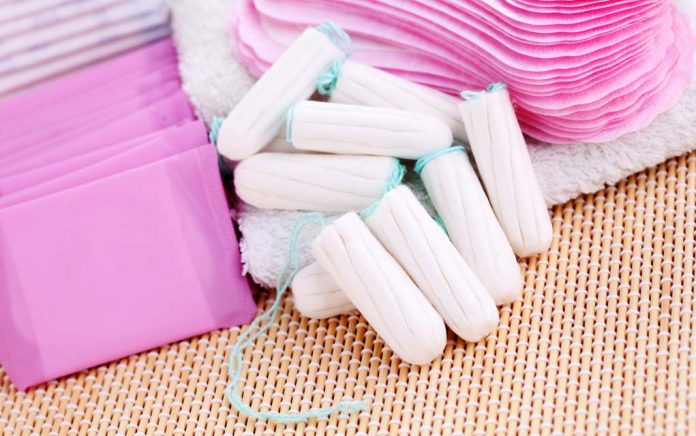
Women have quite a few considerations men never have to face, namely our monthly menstrual cycle. While chocolate can relieve some menstrual frustration, there are plenty of frustrations that don't come from the physical ailments. The issue of which product is best to handle the monthly flow is one such example.
Tampons have been a go-to product for menstruating women for decades. They contain the flow, allowing women to be more active during their cycle, without having to worry about leaks. But many tampon products contain a blend of cotton and rayon that may be harmful to our health.
Read more about conventional cotton tampons and pesticides
What is Rayon made of and is it toxic?
In particular, rayon is a cellulose fiber that comes from wood pulp. When it's bleached, a byproduct called dioxin is released. It is known to be toxic to humans. The FDA states that tampons show dioxin levels at or below the delectable limit, posing no health risk. But there may still be cause for concern.
A common method used in bleaching rayon, elemental chlorine-free bleaching, can still pose a dioxin risk because of the use of chlorine dioxide (the bleaching agent). In theory, these elemental chlorine-free processes can generate dioxins at very low levels, even though the process is considered "dioxin free."
According to the EPA, dioxin exposure causes cancer in lab animals and poses a high risk for humans as well. The agency also finds it to be a risk for damaged immune systems, reduced fertility, an increased risk of pelvic inflammatory disease, and endometriosis. A study on monkeys and dioxin exposure found that 80 percent of the animals exposed to dioxin actually developed endometriosis, and higher exposure levels led to the development of more severe cases and even death.
Why is Dioxin a Big Concern in Rayon Products?
A big issue of concern is that the FDA says low levels of dioxin exposure, like that from tampons, is safe, but the EPA states there is essentially no acceptable level of dioxin exposure. So, which one is it?
Read: A Tampon Experiment: A Picture Tells the Tale
The biggest concern is repeated exposure to dioxin, regardless of whether low-level exposure may be deemed safe. Regular tampon use would be considered repeated exposure. A 2005 FDA study found "detectable levels of dioxin in seven brands of tampons," and that included at least one brand that was promoted as 100 percent cotton.
Rayon's impact is not just a concern inside the body, either. Many clothing items are made from rayon and can pose health concerns as well. The processing treatment can use several toxic chemicals including carbon disulphide, sulfuric acid, chlorine and caustic soda. The combination of these chemicals can linger on the clothing causing rayon wearers to suffer from nausea, vomiting, headache and chest pain. More serious health issues include: necrosis, anorexia, polyneuropathy, paralysis, insomnia and Parkinson's disease.
How Can I Avoid Rayon?
Whether it's going in or on your body, look for rayon-free options. When choosing feminine hygiene products, use organic cotton tampons like Natracare (as recommended in our e-book Label Lessons), or products like the Diva Cup, a silicone reusable product that is inserted into the vagina like a tampon. Rather than absorbing the blood, it collects it (thus the "cup" name). Both brands do not pose a dioxin risk. For clothing, seek out natural fibers and organic when options are available. Many clothing brands are now producing organic and environmentally clothing options that are not only better for your health, but better for the health of the planet as well.




